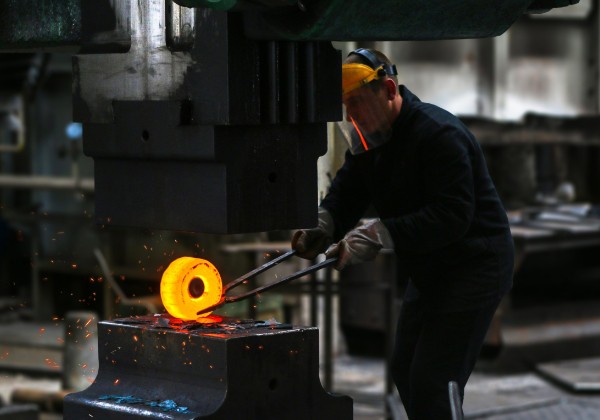Forging Process
How it is done !
Forging Process
Preliminary material segments are cut off in required length by hacksaw - and band saws. In preparation for forging, the preliminary segments must be heated up to an temperature of 1200°C. Forging is the process by which metal is heated and is shaped by plastic deformation by suitably applying compressive force. Usually the compressive force is in the form of hammer blows using apower hammer or a press. Accordingly the raw material changed to Circles, Block, Flat, Ring etc. as per the requirement of the customer.
From Raw Material to Finished Product
Rigorous Quality Checks
Preliminary material segments are cut off in required length by hacksaw - and band saws. In preparation for forging, the preliminary segments must be heated up to an temperature of 1200°C. Forging is the process by which metal is heated and is shaped by plastic deformation by suitably applying compressive force. Usually the compressive force is in the form of hammer blows using apower hammer or a press. Accordingly the raw material changed to Circles, Block, Flat, Ring etc. as per the requirement of the customer.

- Physical Inspection of Raw Material
- Chemical Check up of Raw Material
- Ultrasonic Diagnosis of Raw Material
- Normalising of Sophisticated Raw Material
- Furnace Temperature Vigilance during Preheating & Forging
- Transferring the Forge Product in MICA PIT
- Ultrasonic Scanning of the Normalized Product
Why Forging?
Directional Strength
The forging process produces directional alignment (grain flow) for important directional properties of strength, ductility and resistance to impact and fatigue.
Impact Strength
Through proper grain flow orientation; the forging Process can develop the maximum impact strength and fatigue resistance. Possible in a metal.
Structural Integrity
As is well known, a forging’s structural reliability is Exceptional compared to other metalworking processes. There are no Internal gas pockets or voids that may cause unexpected failure underconditions of high stress or impact.
Conclusion
Forging is not the least expensive method but it is the best. When looking for hubs, axles, spindles and similar, don't be fooled by low Pricing that may indicate an inferior method of manufacturing.
Drop us a message
You're in the right place! Just drop us a message. How can we help?
Or see contact page